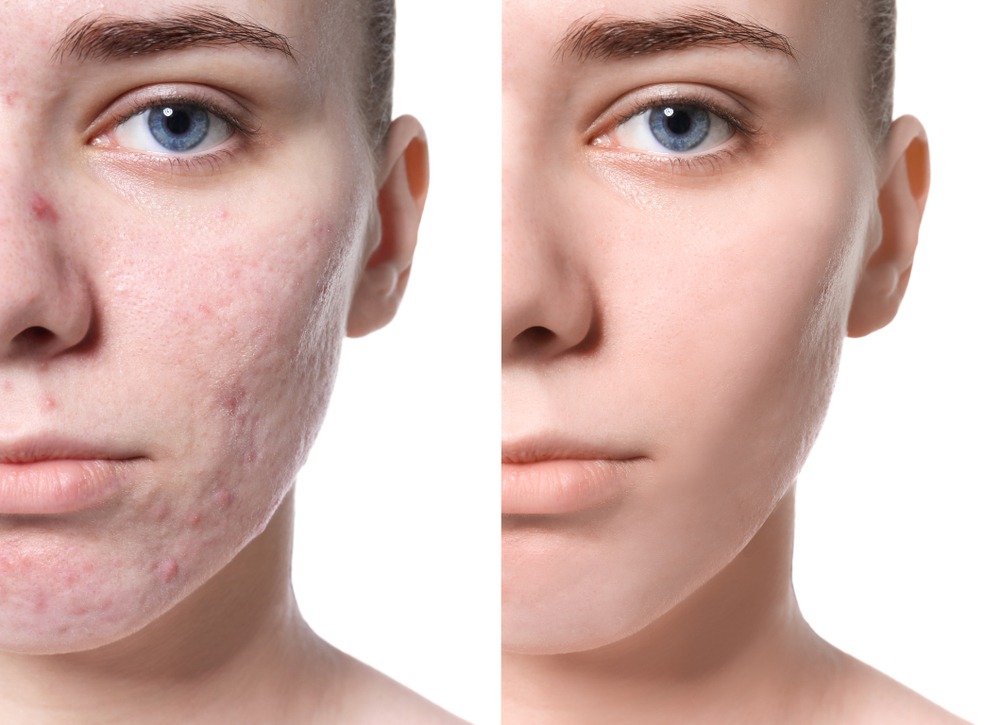Skin Rejuvenation Treatments: The Ultimate Guide to Revitalizing Your Skin
Skin Rejuvenation Treatments: The Ultimate Guide to Revitalizing Your Skin
Blog Article
Discovering Skin Problem: Recognizing and Dealing With Acne Scars for Healthier Skin
Acne scars represent a significant concern for people looking for to preserve healthy skin, as they can influence both appearance and self-esteem. Recognizing the numerous types of marks, from atrophic to hypertrophic, is necessary for determining ideal treatment alternatives.
Understanding Acne Marks

The body's all-natural recovery procedure can lead to either atrophic marks, which look like clinical depressions in the skin, or hypertrophic marks, which are increased and result from overproduction of collagen. In addition, the mental toll of acne scars should not be taken too lightly; several individuals report feelings of embarrassment, anxiety, and reduced self-esteem. This psychological concern can affect social interactions and general high quality of life.
Attending to acne marks requires an extensive understanding of their formation and effect. Awareness of the capacity for long-lasting repercussions linked with unattended marks can motivate individuals to seek ideal therapies. Early intervention and effective monitoring strategies can substantially improve skin appearance and improve psychological durability, highlighting the value of understanding the complexities surrounding acne marks.
Kinds of Acne Marks
Acne scars can be categorized right into unique kinds, each displaying special features and calling for certain treatment methods. acne treatment for sensitive skin. The key kinds of acne marks consist of atrophic, hypertrophic, and keloid marks

Hypertrophic marks, on the other hand, are raised over the skin degree and are the result of too much collagen production throughout the healing procedure. They commonly remain within the limits of the original acne sore. Keloid scars are comparable however prolong past the original injury website, creating bigger, raised locations that can be scratchy or uncomfortable.
Comprehending these kinds of scars is vital for picking suitable treatment alternatives. Different marks may react much better to specific treatments, such as laser therapies, fillers, or surgical interventions, highlighting the relevance of a customized technique to acne mark management.
Identifying Your Scars
Acne marks normally fall right into two groups: atrophic and hypertrophic marks. These can additionally be classified right into ice-pick scars, boxcar marks, and rolling scars, each exhibiting unique qualities dig this and requiring various strategies for assessment.
Hypertrophic marks, on the other hand, are elevated and occur as a result of too much collagen production during the healing procedure. Acknowledging the particular features of your marks-- such as structure, size, and depth-- is important for proper identification (skin rejuvenation treatments). In addition, think about the circulation of scars across your skin, as this can indicate the extent and duration of the acne problem
Engaging with a skin specialist can provide valuable understandings right into the nature of your scars, aiding in the differentiation between numerous kinds. A detailed understanding of your scars will inevitably result in a more customized and you could look here reliable therapy plan, guaranteeing a clearer and healthier skin.
Treatment Options Readily Available
Determining the specific sort of acne scars existing on your skin lays the foundation for checking out efficient treatment choices. Usual kinds of acne scars consist of atrophic (depressed), hypertrophic (elevated), and post-inflammatory erythema.
For atrophic marks, options such as chemical peels, microneedling, and laser resurfacing are widely used. Chemical peels utilize acids to eliminate the outer layer of skin, promoting new cell development.
Hypertrophic marks can be treated with corticosteroid shots to squash the mark or laser therapy to lower inflammation and boost appearance. Silicone gel sheets and stress dressings may also assist in handling raised scars.
Furthermore, dermal fillers can briefly fill out anxieties from atrophic scars, while medical excision might be proper for serious situations. Each therapy choice has its factors to consider and advantages, making it vital to speak with a dermatologist. They can offer tailored recommendations based on the kind and seriousness of your scars, along with your skin type and general health and wellness.
Tips for Prevention
Effective prevention approaches can significantly lower the chance of creating acne scars. The very first step is to preserve a consistent skin care regimen that includes gentle cleansing, peeling, and hydrating. Using non-comedogenic items assists stop stopped up pores, which can aggravate acne. Furthermore, integrating topical treatments including salicylic acid or benzoyl peroxide can successfully manage outbreaks and lessen swelling.
Preventing the impulse to stand out or choose acne sores is vital, as this can cause much deeper skin damages and raise the risk of scarring. Rather, consider using a chilly compress or non-prescription treatments to lower swelling and inflammation.
Sun protection is another crucial aspect of avoidance; ultraviolet (UV) rays can darken marks and impede the recovery process. Using a broad-spectrum sunscreen with at least SPF 30 daily can protect the skin and advertise even healing.
Finally, maintaining a balanced diet plan abundant in antioxidants, minerals, and vitamins supports skin wellness and healing. Remaining hydrated and handling anxiety degrees can also play a substantial role in reducing acne flare-ups. By executing these strategies, people can considerably decrease their my latest blog post opportunities of creating acne marks.
Conclusion
In final thought, understanding and identifying acne scars is vital for effective therapy and accomplishing much healthier skin. Numerous types of acne marks, including atrophic and hypertrophic marks, demand details treatments customized to individual demands.
The body's natural healing procedure can result in either atrophic marks, which appear as clinical depressions in the skin, or hypertrophic scars, which are raised and result from overproduction of collagen. They are additional split into 3 subtypes: ice choice marks, boxcar marks, and rolling marks. Acne marks usually fall right into 2 groups: hypertrophic and atrophic scars. These can further be categorized into ice-pick scars, boxcar marks, and rolling scars, each exhibiting distinctive features and requiring different techniques for evaluation.
Numerous kinds of acne marks, including atrophic and hypertrophic scars, require specific treatments tailored to individual needs.
Report this page